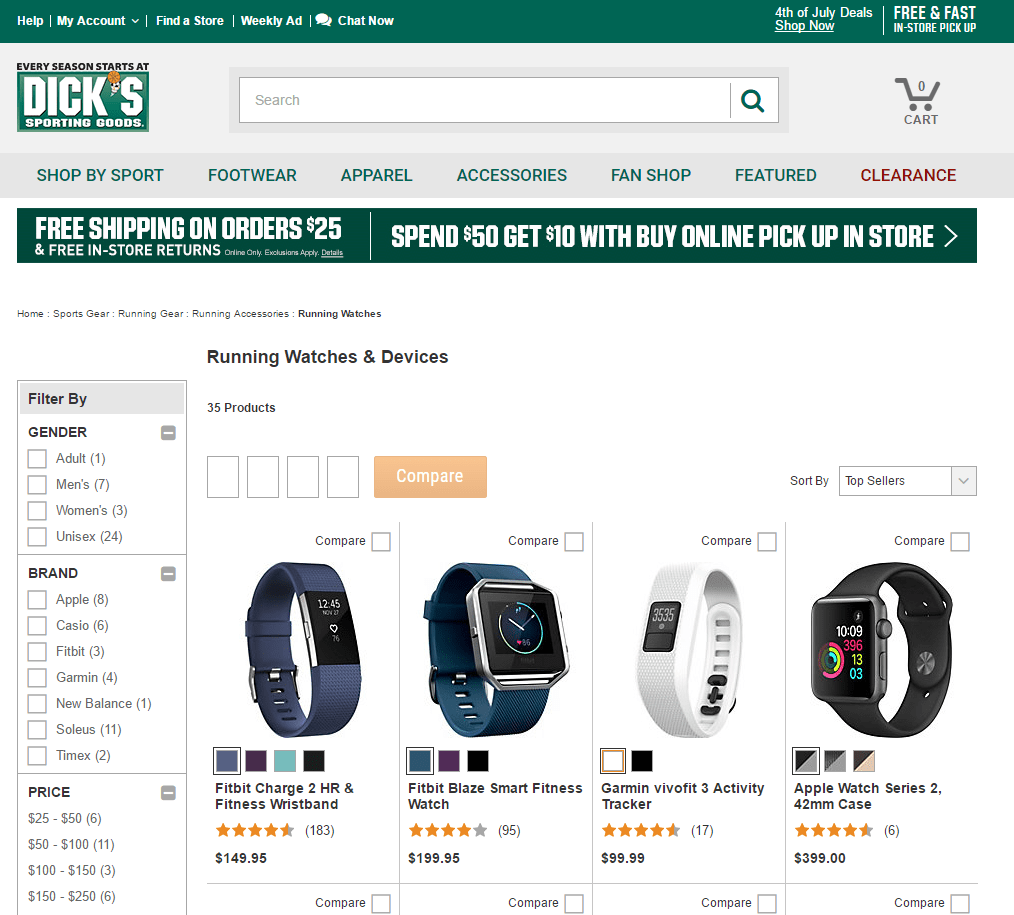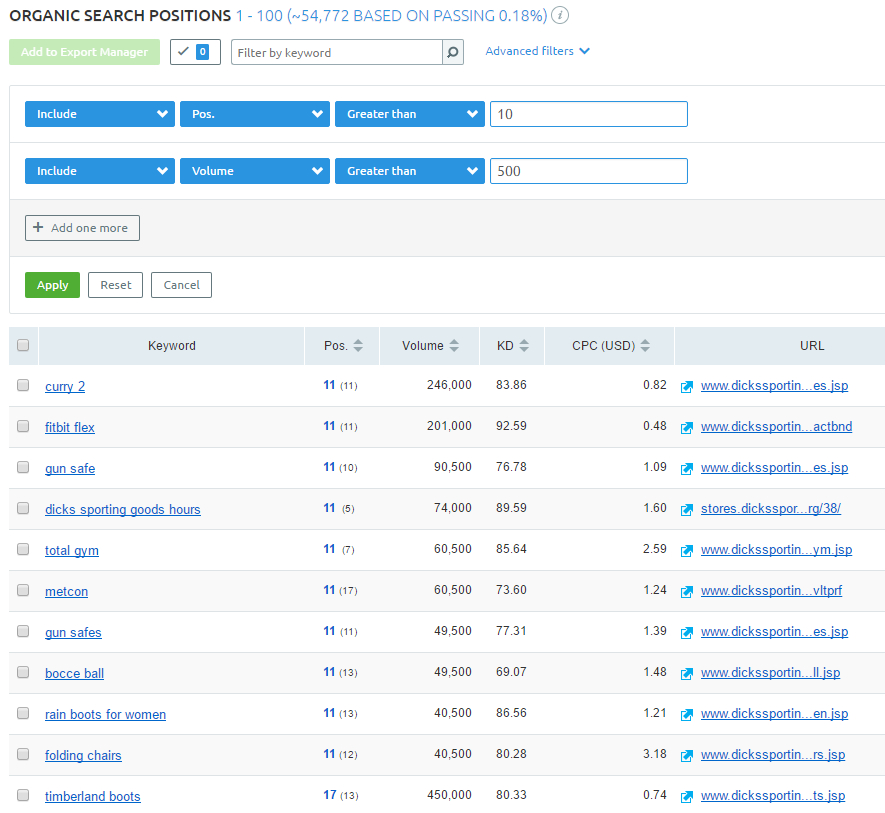E-commerce SEO is a unique beast.
I know this because I’ve optimized close to 150 e-commerce sites during my SEO career.
So it bothers me when I hear or read bad advice from e-commerce SEO “experts” spreading false claims and inaccurate information.
It’s time to stop wasting time and start putting your efforts into SEO initiatives that will pay off.
Here are six of the biggest misconceptions about e-commerce SEO.
Misconception #1: Focus Solely on Technical SEO
This is one of the biggest reasons why online retailers and merchants get frustrated with SEO and stop optimizing.
While you should spend 10 percent of your time on doing things that will result in 90 percent of your success in SEO, technical SEO is time intensive and accounts for maybe 10 percent of your ecommerce success.
For instance, with platforms such as BigCommerce, Shopify, Magento, etc., technical SEO is usually good right out of the box. What happens is online retailers spend thousands upon thousands on technical audits, sitemap optimization, on-page optimization, and more, only to find out the needle has barely moved and, quite possibly even worse, that their rankings have actually gone down. Then, when they ask why doing SEO didn’t help them, I usually find their backlink profile to look something like this:

Links are one of the two most important Google ranking factors.
If you don’t have any high-quality links pointing back to your site, it will be really tough to rank on Page 1 of Google because Google won’t view your site as relevant, authoritative, and trustworthy.
In ecommerce, you’ll find greater opportunities and win greater organic search visibility by focusing on creating and promoting content to build high-quality links, rather than technical SEO.
Misconception #2: Category Pages Don’t Matter
Category pages are the best way to rank for more category-focused keyword searches than any other page.
If someone searches for [running watches] and you sell running watches, then you want to have a category page that is focused on the keyword phrase “running watches.”

If you do a good job categorizing your site, then you can optimize what you have on your navigational bar. Each one should target a group of keyword phrases, such as “running watches” and “best running watches.”
If you don’t have many, then by using a tool like SEMRush (utilizing advanced filters), you can see what you rank for in pages 2-10 and see if there are any keyword groups that you can target with a category page.

To optimize each category page, you have to figure out the keyword groups. Then you can optimize the meta title, meta description, H1 tag, URL, and body content (if applicable) to optimize it for those target keywords.
Misconception #3: External Sites Duplicate Content Is Bad
This one tends to be the most difficult one for people to understand.
Yes, duplicate content (meaning that you have two pages which have the exact same content) is bad if you have it on your site. This is why canonical tags are so important to remove attribute pages and other “useless” pages that don’t provide the searcher with any new information, such as “page 2 on your category page.”
However, just because you use product descriptions that everyone else also uses, it doesn’t mean that you will definitely rank lower. If that were the case, I could scrape someone else’s site and make an identical site with all of the same content, and they would rank lower.
If this were, in fact, true, Amazon wouldn’t be the giant that they are. In fact, they would rank poorly. Don’t they use all of the same product descriptions sold on other marketplaces and direct-to-consumer sites? And, yet, last I checked in SEMrush, they were doing just fine.

The reason Amazon ranks over everyone else is because their backlink profile is strong.

In fact, I took this a step further and searched Google for [Diffraction Glasses]. The top results are Amazon listings, which have the exact same product descriptions as the brand manufacturer’s (GloFX) website.

Many e-commerce experts, and even SEO experts, would say to change the product descriptions for the website’s products. But how will that really help?
When I change the product description, will Google magically increase it to the first position over Amazon just because I have a different product description? I guess it is possible, but I’ve never seen that work or seen a case study involving someone who did such and was successful.
I have, however, seen online retailers and merchants beat out Amazon by focusing on backlink acquisition and pricing and by offering a better customer experience. You don’t need an Ahref’s score of 22 to beat Amazon. You just need enough to surpass them.
Amazon’s backlink profile is diluted among millions of products and categories, whereas you are diluted down to just your products and categories. Since you should have a lot fewer products and categories, you don’t need as many backlinks as they do.
Focusing your efforts on backlink acquisition and customer experience is going to be a much better use of your time than writing unique product descriptions. Google doesn’t devalue your site because other people have the same content (though they may rank that site over yours if they have the same content).
Misconception #4: Reviews Don’t Help SEO
Amazon has done a great job of getting product reviews, which is basically free SEO.
If you have a strategy for acquiring reviews on your products and they can be indexed by Google, then you can receive a tremendous value from having more content on your site.
Searchers are also more likely to trust your content, buy from you, and stay on your page longer reading reviews — all of which will help your SEO.
It’s a win-win every way that you look at it. Reviews are fantastic for the user experience, conversion rates, and SEO.
Misconception #5: ‘One Size Fits All’ Searcher Intent Matching
I once heard someone suggest that category pages should be link bait.
News flash: Category pages will never be link bait.
Generally, there are two types of search intent in Google for e-commerce:
- Research: Someone is looking to understand more about a product (i.e., someone searching for [what are diffraction glasses]). Blog content should be optimized for these searchers.
- Buy: Someone is ready to buy something (i.e., someone searching for [diffraction glasses] is most likely looking to buy diffraction glasses). Product and category pages should be optimized for these searchers.
The worst thing that you can do is put a bunch of content (e.g., infographics) on your category pages trying to get links. Save that for your blog.
Instead, optimize your blog content for people who are in the research intent phase. Help those people who are then ready to buy by adding links to relevant product and category pages.
Misconception #6: SEO Can Fix Everything
If sales are trending in the wrong direction, SEO (or any other marketing channel) probably won’t be able to save that e-commerce business. Things in motion tend to stay in motion.
An e-commerce site with poor content and low engagement metrics (e.g., high bounce rate, low time on page, low/declining conversion rate), year after year, will find it nearly impossible to rank well in organic search.
No SEO technique will help your content rank if it’s worse than all of your competitors. And if your engagement metrics are going the wrong way, then you’ll need to focus on usability, product offering, merchandising, pricing, and more.
Summary
There are many misconceptions about e-commerce SEO. Hopefully, now you can tell the difference between the good and bad advice and start focusing on the things that will make you much more productive and your SEO efforts more effective.
Image Credit
Screenshot by Ronald Dod. Taken June 2017.





![[SEO, PPC & Attribution] Unlocking The Power Of Offline Marketing In A Digital World](https://www.searchenginejournal.com/wp-content/uploads/2025/03/sidebar1x-534.png)